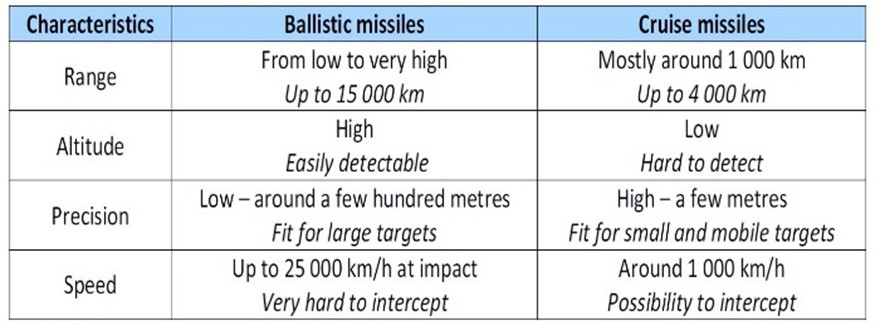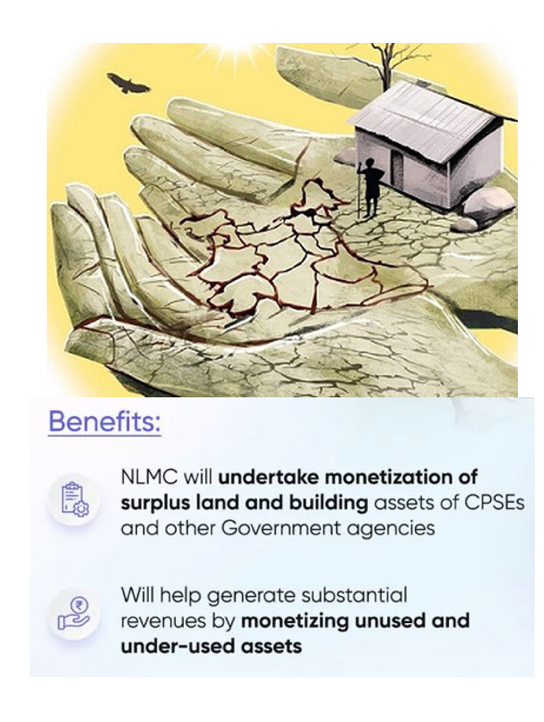Thursday, 17th March 2022
Underutilisation of funds
In News
A Parliamentary Standing Committee has recently highlighted the underutilisation of government funds for PM-Poshan and Shiksha funds.
About the News
- Samagra Shiksha and PM-Poshan accounts for 99.15 per cent of the total allocation under the schemes in this regard.
- The house panel has also directed the Centre to identify the factors behind the underutilisation.
What are the major findings of the report?
- Underutilisation of funds: According to the findings, out of the total allocation of Rs 40,576 crore under the Centrally Sponsored Schemes that come under the Department of School Education and Literacy, only Rs 23,572 crore was spent.
- Lack of coverage:
- PM Poshan: For Poshan scheme only 91 per cent of Rs 11,500 crore were set aside by the Centre as its share for the mid-day meals programme in the 2021-22 budget were spent.
- Samagra Shikhsa: Only 54 per cent of the total allocation of Rs 31,050 crore were spent under the scheme.
What is Samagra Shiksha?
- About: It is an overarching programme for the school education sector extending from pre-school to class 12 and subsumes the schemes of Sarva Shiksha Abhiyan (SSA), Rashtriya Madhyamik Shiksha Abhiyan (RMSA) and Teacher Education (TE).
- Outlay: The scheme will encompass all major policies and programmes in school education and aims to ensure inclusive and equitable quality education from pre-school to senior secondary stage in accordance with the Sustainable Development Goal (SDG) for Education.
- Funding: The fund sharing pattern for the scheme between Centre and States is at present in the ratio of:
- 90:10: For the 8 North-Eastern States viz. Arunachal Pradesh, Assam, Manipur, Meghalaya, Mizoram, Nagaland, Sikkim and Tripura and 3 Himalayan States viz. Jammu & Kashmir, Himachal Pradesh and Uttarakhand.
- 60:40: For all other States and Union Territories with Legislature.
- 100%: For centrally sponsored for Union Territories without Legislature.
What is PM Poshan?
- About: The PM-Poshan scheme which was earlier known as mid-day meal is a scheme to provide cooked meals to students in schools, officially covers 11.8 crore children in classes up to class VIII.
- Centre’s contribution: Under the scheme, the Centre bears the cost of food grains and their transportation.
- State’s contribution: Funds for payments to cooks and workers are split by the Centre in a 60:40 ratio with states, and UTs with legislatures.
- During Pandemic: As schools remained closed due to the pandemic, instead of meals, students were provided food security allowance in the form of food grains and direct benefit transfer under the scheme.
Sources:
Karnataka HC Ruling on Hijab ban
In News
Laying down the first judicial declaration by a constitutional court on the essentiality of hijab in Islam, the Karnataka high court recently, declared that the right to wear a hijab is not constitutionally protected as an essential religious practice.
Background
- The controversy erupted after few Muslim girl students of a Government PU college in Karnataka were denied entry for wearing headscarf.
- They contended that wearing hijab is part of their religious and cultural practice.
- The petitioners had also challenged a Government Order dated February 5, which observed that banning hijab will not violate Article 25, and ordered students to wear clothing according to the dress code prescribed by the concerned College Development Committees.
- The matter was first listed before a single bench, which referred the petitions to larger bench observing that "questions of seminal importance" are involved.
The HC ruling
- Wearing hijab is not ERP in Islamic faith protected under Article 25: The court held that the Holy Quran does not mandate wearing of hijab or headgear for Muslim women and that there is no prescription in Quran on wearing hijab as an indispensable requirement of Islamic faith.
- Prescription of dress code is a reasonable restriction: The bench underscored that the limitations imposed on religious practices on the ground of public order, morality and health would cover beliefs and practices even those considered essential or vital by those professing the religion.
- The court held that the text and context of Article 25(1) juxtaposed with others unmistakably show that the freedom guaranteed by this provision in terms of sanctity, are placed on comparatively a lower pedestal by the makers of our Constitution qua other fundamental rights.
- The Government Order issued on February 5 is valid: On the question whether the GO was incompetent and manifestly arbitrary violative of Articles 14 and 15, the court said that no case is made out for its invalidation.
- No case against college authorities: The court dismissed all writs against the disciplinary action taken by the college authorities.
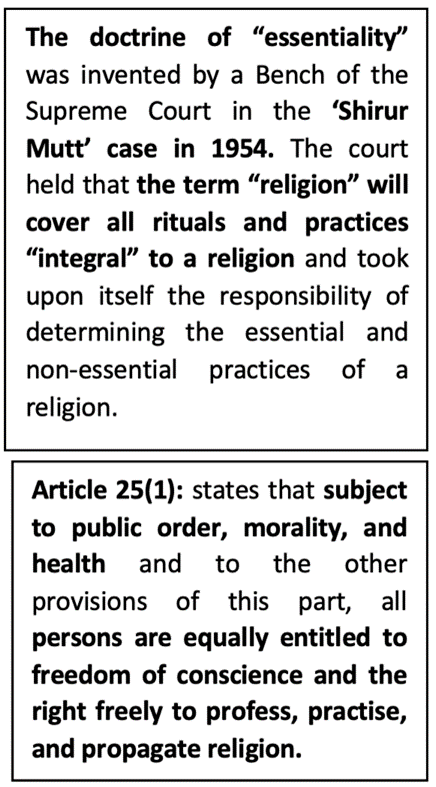
How was the question of ERP resolved?
- The high court held that there is sufficient intrinsic material within the scripture itself to support the view that wearing hijab has been only recommendatory, and not an indispensable part of Islam, either by Quran or Hadith (records of words or actions of prophet Muhammad).
- Mentioning a specific chapter in Quran (sura) which talks about a veil to cover the bosom, and modesty in dress, the bench said that wearing of hijab is “only directory” (directional) because of absence of prescription of penalty or penance for not wearing hijab and that the linguistic structure of verses supports this view.
- The bench said that the Quran may have recommended wearing of a veil and other apparel as a measure of social security and that in the course of time, some elements of religion permeated into this practice as ordinarily happens in any religion.
Sources:
UGC’s Higher Education Framework
In News
The University Grants Commission (UGC) has prepared draft frameworks which, upon implementation, will overhaul the higher education structure.
About the News
- The higher education structure from undergraduate degrees to PhDs will undergo an overhaul from the next academic session in tune with the National Education Policy, 2020.
- Why is it needed?
- This is needed as the existing structure in undergraduate education lacks multi or interdisciplinary flavour.
- Also that, industries now look for human resources with multiple capacities rather than specialists in one particular field.
- This necessitates the exposure of students to a full range of holistic education, community engagement and service, environmental education and value-based education.
- Internships with local industry and businesses are also required in order to meet the demands of future jobs. For this to happen, the curriculum of general education needs to be transformed.
Provisions under the proposed structure:
- Common and Introductory courses in first 3 semesters: For four-year UG courses, students will study a set of “common” and “introductory” courses in natural sciences, humanities and social sciences during the first three semesters, regardless of what they choose to specialise in.
- The common courses will include English language, a regional language, and courses on “understanding India”, environmental science, health and wellness or yoga and sports, AI and big data analysis.
- Choice of a major: At the end of the third semester, students will have to declare a “major”, which will be a subject they want to study in depth.
- The “major” can be chosen from a basket of courses ranging from astronomy and astrophysics to political science.
- Both the academic interest of the student and his/ her performance in the first three semesters will be considered for allocating the disciplinary/ interdisciplinary major.
- Choice of two minor subjects: Students will also have the option of picking two “minor” courses to broaden their knowledge and skills which may be interdisciplinary in nature.
- This means that a student pursuing a “major” in science can opt for humanities or social sciences or even a vocational subject.
- At the beginning of the seventh semester, students will have to take up a research project, which will be their only focus in the eighth and final semester, related to what they have chosen as “major”.
- Filling of seats: The UGC has also proposed that 60% of the total seats for PhDs be filled by NET/JRF qualified students and the remaining through entrance tests conducted by the universities.
- In terms of eligibility, the relaxation of 5% marks, which currently covers SCs, STs, OBCs (non-creamy layer), is proposed to be extended to EWS candidates too.
- As per NEP 2020, the MPhil degree would be abolished from the 2022-23 academic session.
- Credit-based courses in teaching: All new PhD entrants, irrespective of discipline, will be required to take credit-based courses in teaching, education, pedagogy or writing related to their chosen subject and gain teaching experience during their doctoral training period.
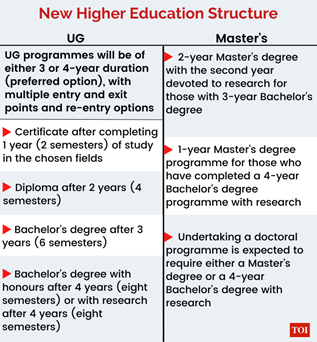
Source:
- 4-year UG degree with ‘common’ courses, revised rules for PhD
- 4-year UG course, faster PhD rules to be out today
Image source:
Vanguard 1
On March 17, 1958, Vanguard 1, the fourth artificial Earth orbital satellite was launched, which was the first solar-powered satellite. Although communication with it was lost in 1964, it remains the oldest manmade satellite still in orbit. It was designed to test the launch capabilities of a three-stage launch vehicle as a part of Project Vanguard, and the effects of the environment on a satellite and its systems in Earth orbit. It also was used to obtain geodetic measurements through orbit analysis.
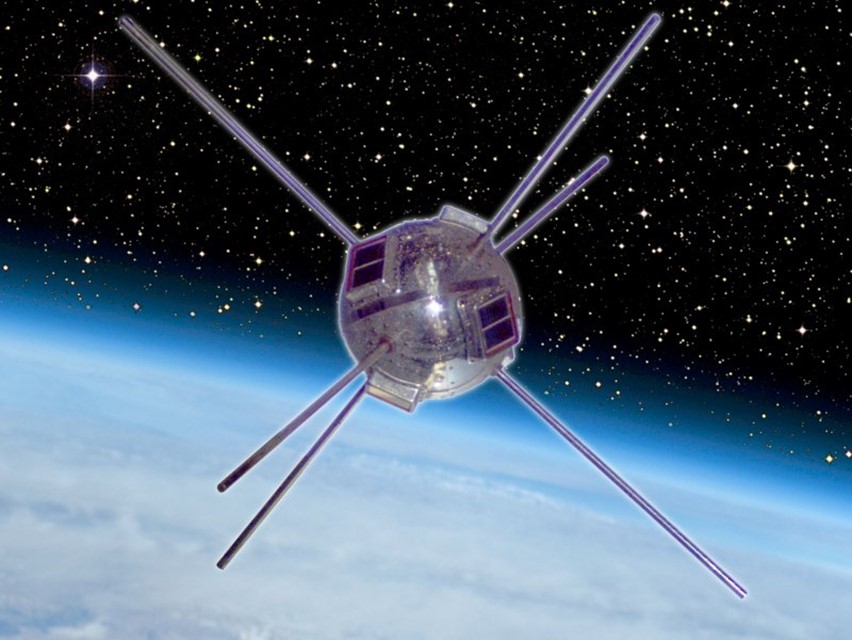
Source:
The Economic impact of Russia Ukraine war
In News
The International Monetary Fund (IMF) has said that Russia’s war with Ukraine and the subsequent sanctions imposed upon Russia will have a “severe impact” on the global economy.
About the News
- Food and energy prices have surged in recent days and supply chains have frayed, adding to the inflationary pressures that policymakers were already struggling to tackle.
- The negative impact on Asia is predominantly because most economies are net oil importers, and food and energy accounts for nearly half of the consumption expenditure in EM Asia.
- Although the ongoing geopolitical tensions between Russia-Ukraine can hurt Asia through multiple channels, such as tighter global financial conditions, elevated uncertainty and the risk of weaker global demand, higher commodity prices, especially oil, are the most important transmission channel.

How is the Global Economy connected to Russia or Ukraine?
- Many European countries are heavily dependent on Russian energy, particularly gas through several vital pipelines.
- The UK is connected through Russia via a large financial market connecting large Russian
- Russia is the second-largest producer of titanium which is used in aircraft
- Russia is the leader in military technology, Artificial Intelligence and Cryptocurrency, hence plays important role in the 4th Industrial Revolution.
- Some 45%-54% of the world's semiconductor grade neon, critical for the lasers used to make chips, comes from two Ukrainian companies.
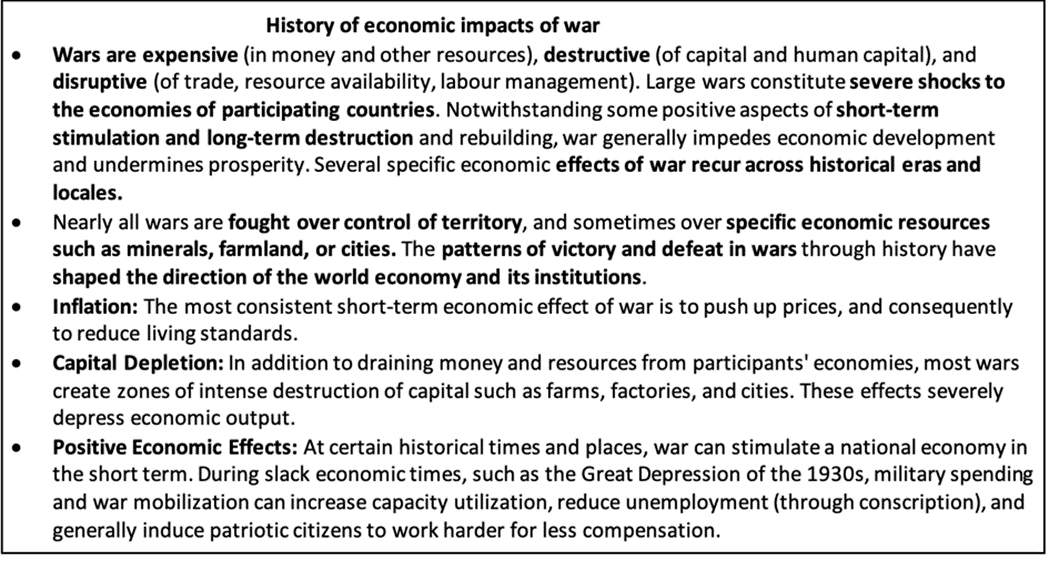
What will be the impact of the Crisis on the global economy?
- Tampering growth: It is estimated that the Ukrainian conflict implies decline in global GDP by 5 per cent in 2022, and close to 1 per cent by 2023 (which is about $1 trillion off global GDP).
- Supply chain: Disruption to supply chains will come from three sources:
- Land-based trade routes between Asia and Europe will be disrupted as transit through Russia becomes more difficult.
- Air ties between Russia and Europe (and, in turn, Asia and Europe) will be severely hampered following the decision of EU countries to close their airspace to Russian aircraft and cargo (and Russia's reciprocal measure to close its own airspace to European planes).
- Sea freight routes through the Black Sea will be cancelled for several weeks following Ukraine's decision to shut down commercial shipping and Turkey's move to restrict transit through the Bosphorus.
- Edible oil: Ukraine alone makes up almost half of exports of sunflower oil. If harvesting and processing is hindered in a war-torn Ukraine, or exports are blocked, importers will struggle to replace supplies.
- Food supplies: Ukraine and Russia account for 30 per cent of the world’s exports of wheat, 19 per cent of corn and 80 per cent of sunflower oil, which is used in food processing. The threat to farms in eastern Ukraine and a cut-off of exports through Black Sea ports could reduce food supplies.
- Rising prices: The Ukraine war coincides with a high-risk moment for the Federal Reserve and other central banks. They were caught off-guard by the surge in inflation over the past year — the consequence, mostly, of the economy’s unexpectedly strong recovery.
- Auto Sector: The automobile sector is expected to be hit hard by the war. Rise in oil prices, continued shortage of semiconductors and chips and other rare earth metals is likely to add to the industry's woes. Besides, Ukraine is also home to many companies which manufacture car components for automakers.

What is the impact on the Indian Economy?
- Impact on the Inflation: Rising crude oil prices will further increase the inflation and make Monetary Policy Targeting difficult when RBI is following an accommodative stance in the Monetary policy
- Financial markets: Financial markets are crashing with investments in stocks and cryptocurrency coming down due to uncertainty.
- Impact on the oil sector: India imports 85 per cent of its oil The Economic Survey 2022 estimated India’s Gross Domestic Product (GDP) growth rate at 8.0 to 8.5 per cent in 2022-23, which hinges on crude oil prices being in the range of $70-$75 a barrel. With crude oil crossing $100 per mark, it will have a negative impact on these sectors. It is also bad for the overall economy as it will increase the government’s import bills.
- Agriculture Sector: The Russia-Ukraine region is one of the major exporters for some of the key agricultural products globally. The pantry staple products such as pasta, flour, and bread are likely to become more expensive in India.
- Impact on the semiconductor industry: Both Russia and Ukraine are the supplier of raw materials for the semiconductor industry like palladium for memory and sensor Ukraine was the leading exporter of highly purified neon gas that is used in etching designs.
- Pharma Sector: Exports of the pharmaceutical sector will be negatively impacted (India has been the largest supplier of pharma goods to Ukraine and Russia worth 181 million dollars and 591 million dollars of goods, also there is the presence of our big pharma companies like sun pharma in Russia which might affect the profitability of the company, added to it oil and natural gas play important role in pharma
- Impact on the Automobile industry: Increasing the prices of commodities like copper, palladium (used in automotive exhaust systems) will lead to the high cost of Original Equipment Makers in manufacturing industries of automobiles putting great pressure on the automobile industry.
- Import of sunflower oil: Most of the imports of sunflower oil was coming from Russia and Ukraine which will get In India, with the severe threat of supply disruptions, companies are left with not many options but to consider hiking prices of daily-consumed edible oils within weeks.
Steps that can be taken by the government to shield the Indian economy and decrease the impacts of the war
- Strengthening the Indian economy: India can take steps in making India Atmanirbhar and decrease or minimize dependence on the other countries.
- Diversification of trade (import of raw materials) partner countries to deal with disruption in supply For eg: India can look for an alternative for the import of fertilisers, zinc, textile fabric, lead from The Middle East, South American countries.
- The increased role of the public sector: As the flight of foreign investments from the capital market, the private sector can face problems of investment and financing. Hence the public sector should play role in employment generation.
- Improving the market for growth and improving the productivity of the workers by investing in the social Investment in social sectors like training and upskilling will improve productivity and increase the efficiency of the industries.
- Fiscal support in the form of subsidies for LPG due to rising oil
- Creating an ecosystem for investment and attracting the FDI as countries are withdrawing their investment from Russia by creating a stable FDI policy.
- RBI needs to rethink its stance on the Monetary Policy to cope with the rising inflation and take appropriate steps
Conclusion: War is not just the destruction of property, loss of lives and livelihood but it makes people poor and keeps making them poor for a long period. World leaders should come on a single platform and make use of the diplomatic relations to engage the countries in dialogue to negotiate and come to a solution to end the conflicts because prolonged conflicts put a long-lasting effect on the world economy.
Question: Discuss the economic impact of the Russia-Ukraine war on the global and Indian Economy.
Sources:
- The Economic Impact of the Russia-Ukraine Conflict:
- Russia’s economy and Western sanctions: What you need to know:
- War and Economic History:
- Ukraine halts half of world's neon output for chips, clouding outlook:
- Russia-Ukraine war's impact on global economy: What's at stake?:
- Global economic implications of the Russia-Ukraine war:
- Russia-Ukraine Crisis: Global impact and lessons for India:
- These Five Sectors Have Been Hit In India By Ukraine-Russia War:
Mandarin duck
This is image of the Mandarin duck. The migratory Mandarin duck has been sighted in a man-made lake in Ziro Valley, Arunachal Pradesh. Considered the world’s most colourful waterfowl, the Mandarin duck is a migratory bird native to east Asia, primarily China. The bird was sighted on the man-made Siikhe Lake in the Ziro Valley. This is a welcome development for the State that enacted the ‘Pakke [site of a tiger reserve] declaration’ aimed at mitigating the effects of climate change and also preserve the endangered species of flora and fauna in Arunachal Pradesh. The Mandarin duck had visited eastern Assam and Arunachal Pradesh in 2021 after a gap of 108 years. The bird was sighted on Manipur’s Loktak Lake in 2013 and in western Assam’s Manas National Park in 2014. Deemed as one of Arunachal Pradesh’s most beautiful high-altitude valleys, Ziro is known for an array of rare moth and butterfly species such as the Kaiser-i-Hind, Apatani glory, Bhutan glory, Brown gorgon and Paris peacock.

Source:
Dishaank app
- Context: The Revenue Department of Karnataka has now attempted to make original land records available through Dishaank App.
- Dishaank is a mobile application developed under the Karnataka Geographical Information System program of the Karnataka State Remote Sensing Applications Center (KSRSAC).
- The app is built on digitized versions of maps for 70 to 80 lakh old parcels of land from a land survey dating back to 1965.
- The objective of this app is to enable citizens to avail the information about the land and its ownership as recorded in the Bhoomi database.
- This is expected to bring in transparency and enable citizens to identify the actual owner, location of land etc. thereby reducing land-related disputes.
- The Dishaank app is currently available for Android phones on the Google play store.

Source:
- With Dishaank app, land survey records at click of a button
- Dishaank app: How to download Karnataka land records?
Image source:
Project Dolphin
- Context: A recent meeting of the Empowered Task Force (ETF) on Gangahas noted a slow pace of approval for Project Dolphin.
- Project Dolphin is one of the activities planned under Arth Ganga,an ambitious inter-ministerial initiative of the government approved in 2019.
- The Project will be on the lines of Project Tiger, which has helped increase the tiger population.
- It would be implemented by the Ministry of Environment, Forest and Climate Change.
- Gangetic dolphin (Platanista gangetica), a national aquatic animal is known to inhabit the Ganga river system serving as an indicator species of the river that is spread across several states.
- It is one of five species of river dolphin found around the world and is found mainly in the Indian subcontinent, particularly in Ganga-Brahmaputra-Meghna and Karnaphuli-Sangu river systems.
- The construction of dams and barrages, and increasing pollution have led to a decline in the population of these species.
- As the Gangetic dolphin is at the top of the food chain, protecting the species and its habitat will ensure conservation of aquatic lives of the river.
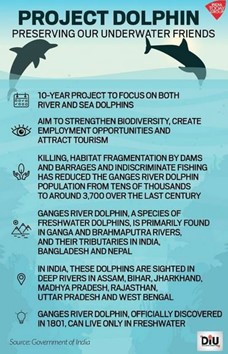
Source:
- Project Dolphin: Why is it important to save a declining river species?
- Project Dolphin: Minister pulls up officials over slow pace of work
Image source:
White Phosphorus Bombs
- Context: A senior Ukrainian police officer has accused Russian forces of launching phosphorus bomb attacks in the eastern region of Lugansk.
- The white phosphorus munition is a UN-banned weapon.
- It is used in smoke, lights and during war to make the bomb more lethal.
- This weapon is dangerous because it burns rapidly after coming in contact with air (it reacts with air to emit white smoke called phosphorus pentoxide) due to which the severe heat and poisonous smoke can kill a person
- Death due to white phosphorus bombs are so painful as Its particles penetrate deep inside the human body making it extremely difficult to treat.
- It can be used to set fire to clothing, fuel, ammunition and other flammable materials.
- International law prohibits the use of white phosphorus shells in heavily populated civilian areas, but allows them in open spaces to be used as cover for troops.

Source:
- Russia Using "Nazis' Flaming Onion" Phosphorous Bombs, Alleges Ukraine
- Russia Ukraine War: White phosphorus bomb wreaked havoc on Donbass, which the Nazis called Fleming Union, know how dangerous it is
Image source:
Heatwave in Mumbai
- Context: The Konkan region, including Mumbai, has been experiencing severe heat in the recent days.
- The ongoing heatwave in Konkan, including Mumbai, is because it is under the direct influence of the prevailing heatwave in the adjacent Saurashtra-Kutch regions of Gujarat.
- In addition, the slow movement of sea breeze along the Maharashtra coast and the overall clear sky conditions have together resulted in such hot conditions.
- A region or locality is considered to be under the influence of heatwave if:
- the maximum temperature reaches or exceeds 40 degrees Celsius in the plains, or
- 30 degrees Celsius in hilly regions
- Over the coastal regions, the threshold for the maximum temperature is 37 degrees.
- When the maximum temperature departure ranges between 5 and 6 degrees, the India Meteorological Department (IMD) declares heatwave.
- Likewise, severe heatwave is declared when the recorded maximum temperature of a locality departure from normal is over 6.4 degrees.
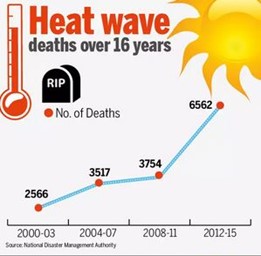
Source:
- Explained: Why is Mumbai experiencing a heatwave in March?
- Mumbai Sizzles at Near 40 Degree Celsius; Here's Why City is Under Heatwave & How it Could be Fatal
Image source:
United Nations votes are not black and white: TH
Essence: In the opinion of the author, delegates at the United Nations do not vote for or against other countries; they vote by considering their vital national interests. During the current Ukraine Russia crisis, India abstained from voting in the Security Council, the General Assembly, and the Human Rights Council. This vote should be seen considering the situation in Ladakh, Afghanistan, the increasing ties between Russia and China, and its membership of the Quad.
As per the author, U.S. criticism of India’s vote was as expected in the context of Quad. However, India has expressed its fundamental position that war is not a solution and diplomacy should be the only option to prevent war. By not naming or blaming anyone India kept its options open.
Why should you read this article?
- To know about the voting procedure in the UN Security Council and General Assembly.
- To understand the reasons and significance of India`s voting pattern in the UN related to Ukraine Russia War.
Source:
Creative diplomacy is needed to end the Ukraine War: IE
Essence: The editorial talks about the futility of Russia Ukraine war, its necessities, ramifications, and ways to conclude towards peace between the stakeholders. The rational intent of protecting the “genocide against Russians” in Donbas region of Ukraine doesn’t call for harming the civilians, bombardment of hospitals and warring at the humanitarian corridors. Participation of foreign nation in internal affairs, subjugation through brute force, more so, after claiming a common cultural history is unforgivable.
European Union has felt threatened with Russian nuclear standby protocol. Putin’s condition of “demilitarization and neutral status of Ukraine” might be respected soon but creative diplomacy would involve early diffusion of tensions and invasions. India could nudge both the sides to create such diplomacy.
Why should you read this article?
- To know the impacts of Russian invasion on Ukraine.
- To understand the role of creative diplomacy and ways to stop the war and prosper peace.
Source:
Clean energy should use the battery of a circular economy: TH
Essence: Budget speech of this year focused on the role of cleaner and renewable technologies. It also talked about transitioning from a liner economy to a circular one. Interlinking of both would be important since an efficient waste management ecosystem would be necessary to manage waste generated by future renewable energy projects. Apart from energy security, circular economies also have potential to generate jobs while fostering environmental sustainability.
However, to enable realization of these potentials, it is important to promote innovation in technology and financing while ensuring strict quality control.
Why should you read this article?
- To know about the importance of the circular economy for the renewable energy sector.
- To understand steps which should be taken to promote a circular economy.
Source:
Phool Dei
Background
Phool Dei is a festival that is celebrated on the 1st day of Chaitra month, which falls mid-March in Uttarakhand.
About the Festival
- It is a spring festival mostly celebrated in the Kumaon and Garhwal regions of Uttarakhand.
- As a ritual, the children, especially girls, collect local flower from peach, plum, apricot, cherry, almond, pear and apple trees and place them in the front of household.
- The festival is a symbol of preserving the nature and respecting the communities along with the welcoming of spring season.
- The children who put flowers in front of the doors are treated with local delicacies on the last day of the festival.
- The festival, thus, tries to inculcate the notion of environmental conservation among the populace and children in particular.

Quote: “Conservation is a positive exercise of skill and insight, not merely a negative exercise of abstinence and caution.” -Aldo Leopold.
Source:
Share the article
Get Latest Updates on Offers, Event dates, and free Mentorship sessions.

Get in touch with our Expert Academic Counsellors 👋
FAQs
UPSC Daily Current Affairs focuses on learning current events on a daily basis. An aspirant needs to study regular and updated information about current events, news, and relevant topics that are important for UPSC aspirants. It covers national and international affairs, government policies, socio-economic issues, science and technology advancements, and more.
UPSC Daily Current Affairs provides aspirants with a concise and comprehensive overview of the latest happenings and developments across various fields. It helps aspirants stay updated with current affairs and provides them with valuable insights and analysis, which are essential for answering questions in the UPSC examinations. It enhances their knowledge, analytical skills, and ability to connect current affairs with the UPSC syllabus.
UPSC Daily Current Affairs covers a wide range of topics, including politics, economics, science and technology, environment, social issues, governance, international relations, and more. It offers news summaries, in-depth analyses, editorials, opinion pieces, and relevant study materials. It also provides practice questions and quizzes to help aspirants test their understanding of current affairs.
Edukemy's UPSC Daily Current Affairs can be accessed through:
- UPSC Daily Current Affairs can be accessed through Current Affairs tab at the top of the Main Page of Edukemy.
- Edukemy Mobile app: The Daily Current Affairs can also be access through Edukemy Mobile App.
- Social media: Follow Edukemy’s official social media accounts or pages that provide UPSC Daily Current Affairs updates, including Facebook, Twitter, or Telegram channels.


